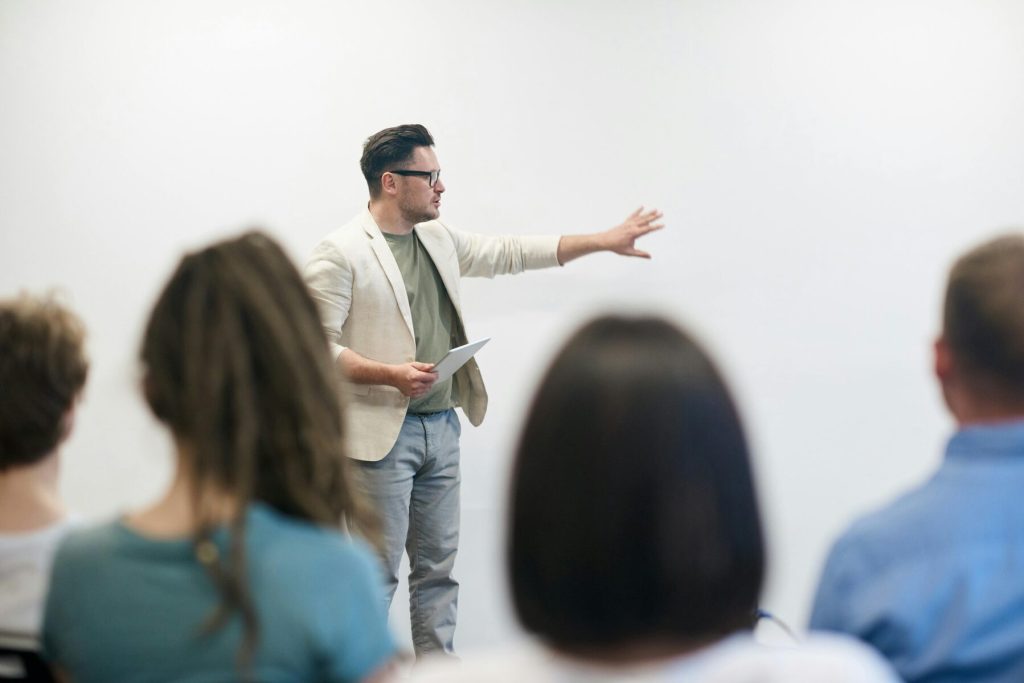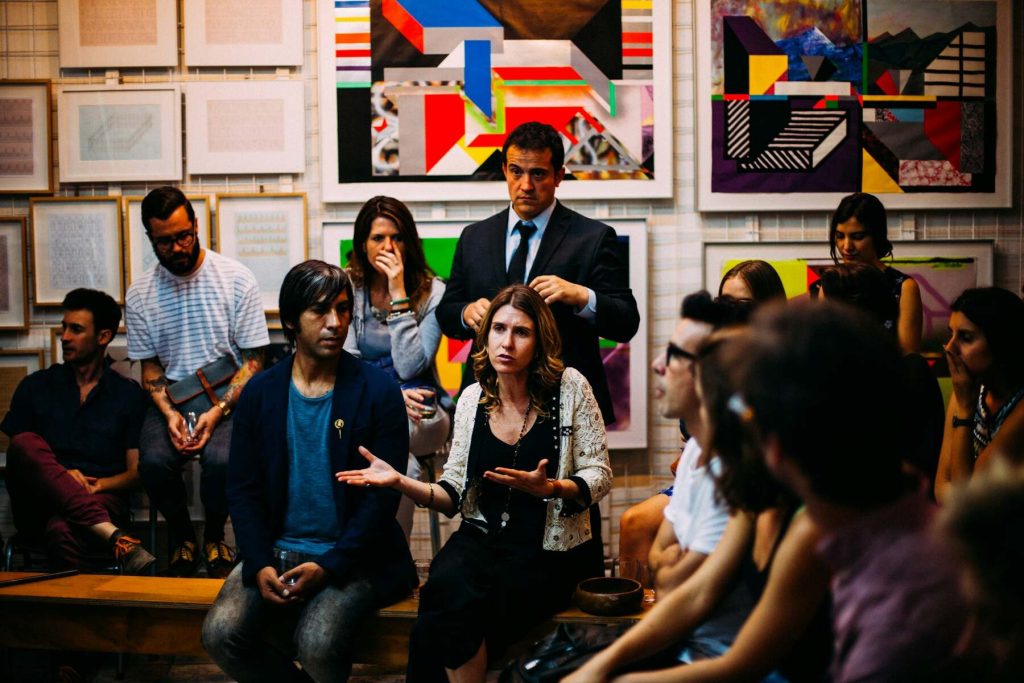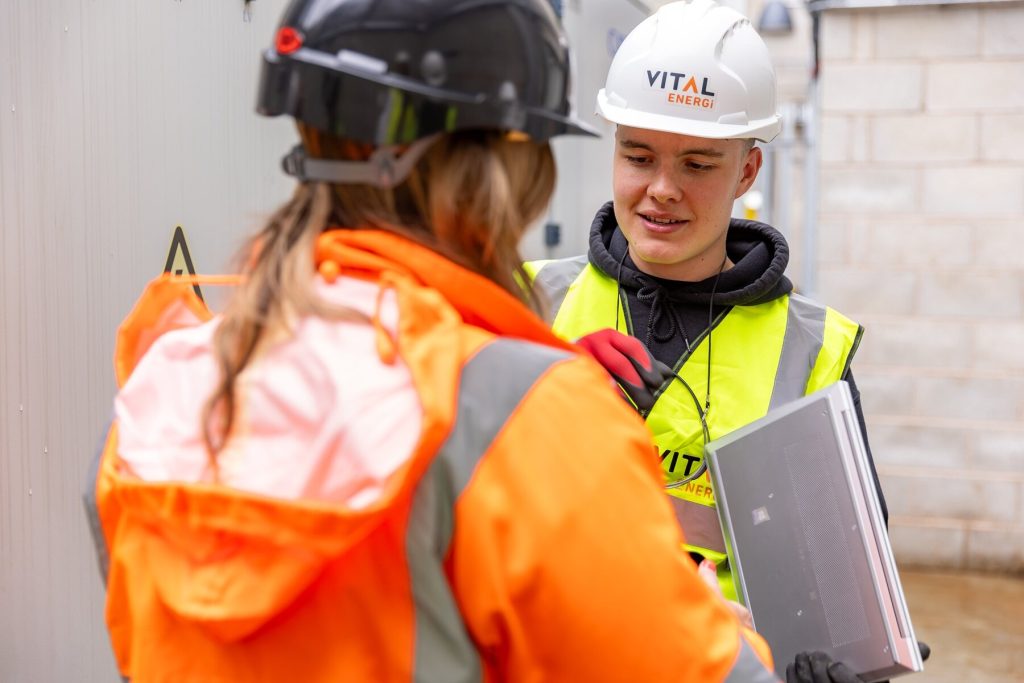What Are the Requirements for a US Student Visa?
Find your perfect college degree
Studying overseas gives you a refreshing experience that may not be afforded to you by your home country. Nothing beats the feeling of going out of your comfort zone and exploring foreign places, cultures, and people—and earning your education there!
You may have chosen to study from several countries but picked the United States. Excellent choice because, arguably, there is no country in the world as diverse as it is!
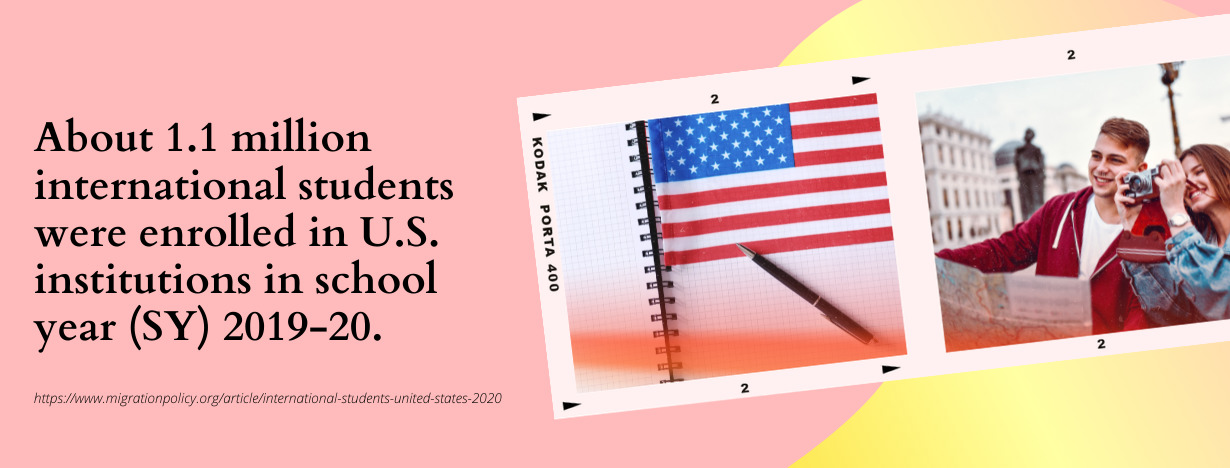
Why Would I Need a Visa?
You may need a student visa if you want to study in a foreign country. A student visa allows you to stay legally in the country for the duration of your studies. Depending on the country, you may need to obtain a student visa to enroll in a school or university.
Despite the recent controversy over visa restrictions, the United States has maintained its status as a top destination for international students.
International students can choose from various study programs and universities, highly ranked degrees, modern laboratories, and generous Ph.D. funding in the US. An incredible bonus is immersing yourself in a rich mix of cultures. In the 2019-2020 academic year alone, a million international students were educated in the US!
The requirement for international students – those without US citizenship or permanent residency – to attend school in the United States is to complete a US student visa application. Student visas allow you to study, participate in language programs, or exchange with institutions in the US.
Like many hopefuls, you may feel overwhelmed thinking of the phrase “student visa application!” We guarantee you’re not alone! Explore this article for the information, tips, and tricks you need to get through the process:
Basic US Student VISA Steps
1. Choose and apply to the university where you’ll be studying.
Before applying for a student visa in the US, you will need to decide where to study. There are a plethora of schools and universities to choose from; some even became test-optional recently. If you wish to apply for a visa, your university will need to send you an acceptance letter (which comes in an I-20 form).
Do not be shy about contacting some American universities for advice and assistance with the visa application process, especially from the school you’re planning to attend.
To attend a US school, you must apply (and subsequently obtain admission). Each year, US graduate and undergraduate programs require applications to be submitted between December and January. Then, around April and March, schools usually notify applicants about admissions.
You need to apply to (Student and Exchange Visitor Program) SEVP-approved schools as an international student. The SEVP school search tool allows you to find an approved school or to check if the school you’ve selected is genuinely certified by SEVP.
Students on J-1 visas are most likely to apply to exchange programs at their home institutions. The official J-1 visa website has a list of designated sponsor organizations.
2. Select the kind of student visa you’re going to apply for.
The three types of visas for international students in the United States are F1 Visa, J1 Visa, and M1 Visa. If you wonder, “What visa is required?” make sure to read on!
Obtaining employment through F1 and J1 visas is possible but not guaranteed. However, M1 visas do not permit employment. For you to gather information on how these three types of international student visas will affect your life in the United States, let’s take a look at them in a more specific context below:
- F1 Visa
Academic studies require an “F1” visa. For students who are enrolled in a program designed to improve their academic skills or English language proficiency, an F1 visa is required. International student visas for the United States are usually F1 visas. The full-time student status must be maintained by F1 students and make sure to be enrolled in the minimum course load required. Those with F1 status may work part-time on campus (no more than 20 hours a week).
Furthermore, students are permitted to participate in optional practical training (OPT) for up to one year after completing an academic program. The I-20 form, known as the Certificate of Eligibility for Nonimmigrant Student Status, typically expires when the student finishes his or her studies.
- J1 Visa
Students who require practical training without access to their home country will receive a J1 visa to complete their academic program. Considering the exchange visitor program sponsor allows, students in the J-1 student status can engage in similar employment as those in the F1 visa. This is the second most common kind of student visa typically awarded to international students.
- M1 Visa
Student M1 visas may be issued to students attending a non-academic or vocational school. For students on M-1 visas, they cannot work while pursuing technical or vocational programs. Students applying for M-1 student visas must provide evidence that there is sufficient funding and resources to sustain their daily expenses while studying and living in the country.
3. Pay the Sevis fee.
A SEVIS fee should be settled at least three days before applying for a US visa is submitted. You can pay your fee either online or by submitting a paper form. You can access both resources through the SEVP website of US Immigration and Customs Enforcement (ICE). Be careful to input the required details exactly as they appear on your I-20 or DS-2019 form.
The fee for an I-901 is $350 for holders of an F/M visa and $220 for holders of a J student visa; these are the most updated fees found on their site. Various forms of payment are described on the website, including credit/debit cards, checks, international money orders, and Western Union QuickPay.
Feel free to check and go for the most convenient mode of payment on your end. Following payment, you can visit the website to verify your payment status. You can also pay the fee through someone else (such as your sponsor, for instance). Third parties who pay your expenses on your behalf should provide you with a receipt.
Payment confirmations can be printed immediately after processing your payment from the website. You should have them printed out. Your US student visa interview will require you to present this confirmation of payment.
If you change your non-immigrant status or apply for any other US immigration benefits, you may also have to show the confirmation to the customs officer at your chosen US Port of Entry.
4. Complete your visa application.
The next step is to go through the actual visa application. To apply for a visa, you must first locate the Embassy or consulate affiliated with your country or region.
The US Government website list includes your country’s Embassy and consulate. Locate them now because it will be conducive for you until later when you’re finally studying in the US.
To apply, secure the following documents regardless of which country you live in and which Embassy or consulate you contact:
- After paying the SEVIS fee, you will receive from your university the Certificate of Eligibility for Non-immigrant (F-1) Student Status (Form I-20).
- Pay the $160 fee to the US Embassy of your home country and collect the receipt for it.
- You’ll need to fill out the DS-160 form online and bring it to your interview.
- You must have a valid passport that is valid for six months beyond your intended stay.
- Carry your old passports for verification purposes.
- During your studies, you need to provide proof of your financial situation (bank statement). The amount required would vary, so you need to ask specifically for this.
- A recent color digital photo that meets standard criteria and format.
- A transcript, diploma, degree, or certificate from each school you attended, as well as standardized test scores.
During the application process, you will also choose the Embassy where you plan to appear for your visa interview. All areas on the form must be filled out in English, except where you must enter your full name in your native alphabet. If you have difficulties understanding the instructions in English, there are some translations on the form.
DS-160 FAQs can provide further information about completing this form, so feel free to visit their site. You’ll need to bring the confirmation page of this form to your visa interview once you’ve completed the online application and submitted it.
5. Pay the visa application fee.
The fee for Machine Readable Visas, also called MRV fees, applies to all visa applications. The payment methods may vary on the Embassy or consulate website, so be sure to review and check them. Visa application fees are non-refundable and non-transferable, but you can pay them in three ways generally:
- You can do this in person at any accredited bank
- If you pay by phone (you will receive a confirmation number for your payment)
- It is possible to make payments online (but you will need to print your receipt)
6. Prepare for an interview.
Your F-1 visa interview determines your F1 student visa. The fingerprints will be scanned digitally for records. They usually take your passport to get your visa, and they will notify you when your passport can be returned.
Be sure to bring all necessary receipts, requirements, and documents. You may benefit from the support of an academic letter, so try to obtain it if possible. Your decision to study in America will be examined, and you will need to answer personal questions.
Please request an interpreter if you are unable to speak English to answer the questions during the interview. Approximately five minutes or so will be allotted for the interview.
Topics covered in the interview will include:
- What are your reasons for studying in the US, and why you chose it among all other countries
- Your academic credentials (test scores) and questions regarding your school’s educational programs.
- They will ask you about your ties and obligations in your country to prove that you’ll be going back home after graduation.
- Your ability to finance your education should be demonstrated.
You will either be approved or denied a student visa based on your answers, so think carefully before stating your answers. After studying in the US for years, you need to convince them that you intend to return home. This will give you more brownie points to have your application approved.
Tips and Details About the Interview
Applicants who are late for their visa interviews may be asked to reschedule. So be on time for your appointment. An appointment is usually required to gain entry into a US embassy or consulate.
If you’re under 18 and need your parents to accompany you, a translator, or an assistant for the disabled, you will need to notify your chosen Embassy or consulate of the name of the parents, translators, or assistants accompanying you.
The visa interview is meant for the consular officer to determine if you meet the United States student visa program requirements and, if so, what kind of visa you should receive.
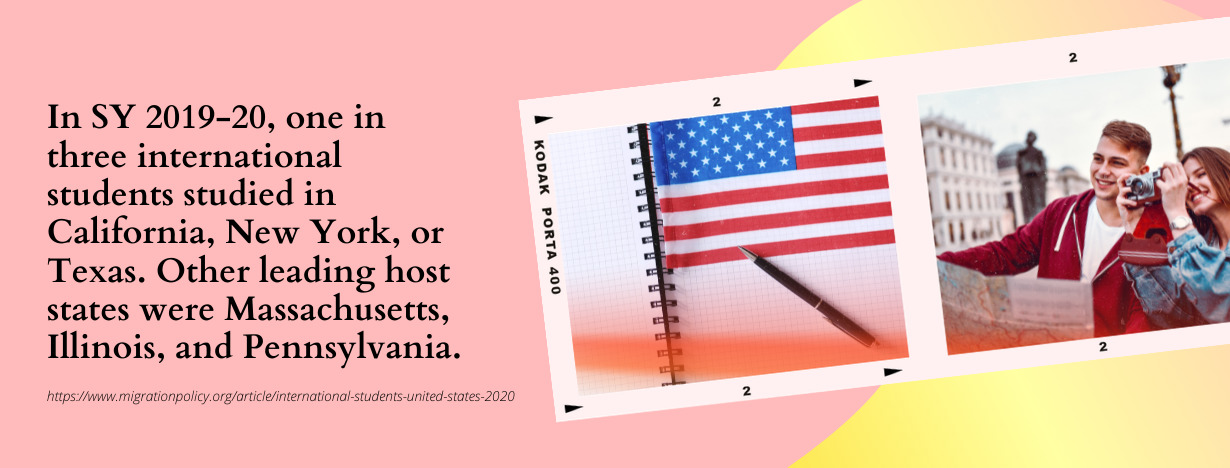
Prepare yourself to answer questions related to ties to your country of origin, your proficiency in English, your academic background, the programs in the US to which you were admitted, as well as your or your family’s financial status. Additionally, you may be asked what you plan to do after you complete your studies.
Your application process will include ink-free, digital fingerprint scans. Visa interviews usually involve this. You will learn from the consular officer at the end of your interview whether your application will require further administrative processing, which may result in an extended period of waiting for your visa. There will be different wait times in other countries.
Additionally, you will be informed about the return of your passport and visa. You can track the delivery of your passport using the tracking number that the courier company sends you by email.
Visas can be issued for F-1 and M-1 students up to 120 days before the start date of your study program, but you cannot enter the US 30 days before your program begins. There is no deadline for issuing J-1 visas, though.
For those who wish to enter the United States before these 30 days, a visitor visa must be obtained. Applicants returning to resume studies are not limited to 30 days – they can enter the US at any time as long as their visa is valid.
Remember: Pay the issuance fee (if applicable) and receive your visa.
Students who are approved for a US student visa are required to pay an issuance fee. A reciprocity agreement between your country and the US may or may not need this fee. You can refer to their costs chart on travel.state.gov.
You’ll receive your new student visa in your passport after completing all of the steps above and have received approval for the international student visa to the USA. In some cases, you will need to come to the Embassy in person to pick it up, whereas there could be instances when they can return your visa and passport by mail.
Your Student Visa Information
Familiarize your student visa once you have finally obtained it:
- Students usually receive a student visa for the duration of their studies. There is the possibility, however, that you will need to renew your visa during your studies. It is best to check whether or not your country requires visa renewals while you are studying. You can visit your Embassy in advance to inquire about this.
- On-campus employment for international students on F-1 visas is limited to part-time work (20 hours or less per week). Students in the US face relatively strict and complicated work regulations, so you might want to plan so you won’t need to work while you study there.
- A 30-day grace period will be given before you can begin your classes in the United States.
- Maintaining a passing grade at your university is necessary to maintain your student visa. Your international adviser can help you extend your program if you cannot finish it in the previously set time.
- Extending your passport is possible through the consulate or embassy of your country. But of course, it would be best to ensure that your passport is valid for several years before you start your visa application. This will save you time and stress.
Upon Arriving in the US
A Customs Declaration Form (CF-6059) must be filled out before you land in the US if you are arriving by plane. The flight attendants can assist you if you have questions or concerns about them. A Form I-94, an arrival or departure form, will also need to be filled out online or on paper.
Visas for US students are valid for the period stated on the visa. I-94 forms will also be stamped with a separate “D/S” (duration of status) date. You must depart the US by this date.
Your visa may expire during your stay; however, you are still permitted to remain in the United States until this date. A visa that has expired from your previous visit to the US must be obtained again before you can return to continue your studies. Renewing or re-issuing a student visa in the US is not possible. You must go to an embassy or consulate abroad.
You will see the date on your I-94 form if you receive one on paper. In the case of an electronic I-94, CBP officers will place an admission stamp on the passport that serves as proof of the electronic I-94 and will record the date and time on the stamp.
When you leave the US, you must return your paper I-94 form to a CBP official. Keep the form in a safe place in your passport. As indicated in your SEVIS form I-20/DS-2019, you should visit the international student assistance office within 30 days of your course or classes officially starting. You may ask your university which department or office to inquire about this.
Your intended participation will be validated by a Designated School Official (DSO), who will report your arrival to SEVIS. If you do not do this, SEVIS will automatically terminate your record, and you may be considered to violate your United States residency status. So, make sure that there will be a smooth process for this requirement.
The DSO can also provide advice on insurance issues. You should provide proof that you have purchased a private health insurance policy to cover medical expenses at your US institution since the US doesn’t have a universal healthcare system.
How Long Can You Stay?
Student visas with F status require that they leave the US within 60 days after the end of the program, as indicated on the I-20 form. For students on J or M visas, the 30 days following the program end date listed on Form I-20 must be observed.
If you are extending your stay in the US, a visa extension can be requested from the American consulate. Keeping an eye on your visa options after graduation should be considered before requesting a visa extension.
Tips for a Smooth Student Visa Application Process
You may be clear on the steps you need to take to get your student visa, but how can you rest easy knowing that nothing will go wrong? For a seamless visa application process, we recommend the following invaluable tips:
1. Begin your application early.
You must apply for your visa as soon as you are admitted and have received your school’s Form I-20 or Form DS-2019. If you apply too late, your visa application will most likely be rejected.
Applicants who plan to apply to several US schools should hold off on applying for a visa until their goals have been met or until they have been admitted to their top school of choice.
Taking this step will help you weigh your choices and determine which school is right for you. You wouldn’t want to regret your decision because you rushed your visa application.
2. Acquire a visa first before buying your plane ticket.
Buying a plane ticket before you obtain your student visa is not a good option at all. Getting started on your student visa application early is a good idea, but there is no guarantee that your application will be approved. So it’s best to buy your plane ticket later.
There will most likely be no refund for prepaid airfare if you are rejected for a student visa in the US. When you cancel within the 24-hour period of booking your flight, usually, you cannot get a refund in full. Still, ask about the airlines’ different refund policies.
3. Don’t hesitate to contact your Embassy for clarifications.
As mentioned above, the visa application process for obtaining an F-1, M-1, or J-1 student visa is similar for each of these visa types.
You may find that some of the steps above differ slightly from your visa application. Most often, this occurs because US embassies manage or process certain information differently.
For this reason, you should always contact the nearest Embassy if you have questions about the visa process. The best source of information regarding visa fees, the interview, and other matters pertaining to visas will always be your Embassy.
What do You Need to do if Your Student Visa is Denied?
The US visas website states that most visa applications are accepted. Nonetheless, a student visa may be denied in some cases. A failure to fulfill a specific requirement before or during the interview will cause you to be disqualified.
You may not be eligible for a US student visa if you have the following problems:
- There was a problem with the security check. You may not realize it, but certain crimes can disqualify you from obtaining a US visa. Although this is very rare to happen, this is one apparent reason someone’s visa application will be denied.
- There is no proof that you have enough money to sustain your living expenses and studies. A student visa to the US is often denied because of this factor. Having enough money to last you for the entirety of your program is not necessarily expected, but you should have enough for at least one academic year.
- Your interview is canceled because you failed to show up. In the case of late arrival or inability to appear, your visa application may be rejected.
- If your program ends, you fail to prove that you will leave the United States. There is a need for the US government to ensure you will not overstay your visa (on purpose or by accident). Once you complete your degree program, you will need to prove that you intend to return home.
- There are some items that you failed to carry with you during the interview. Your visa application can be denied if you don’t bring all the necessary documentation, such as a passport, requirements, receipts, and official visa-related documents.
- The application for a student visa to the United States was submitted too late. A student visa will not be approved if you apply for it with too little time before starting your program. You will not get a visa until after you start your program. There is the issue of time here.
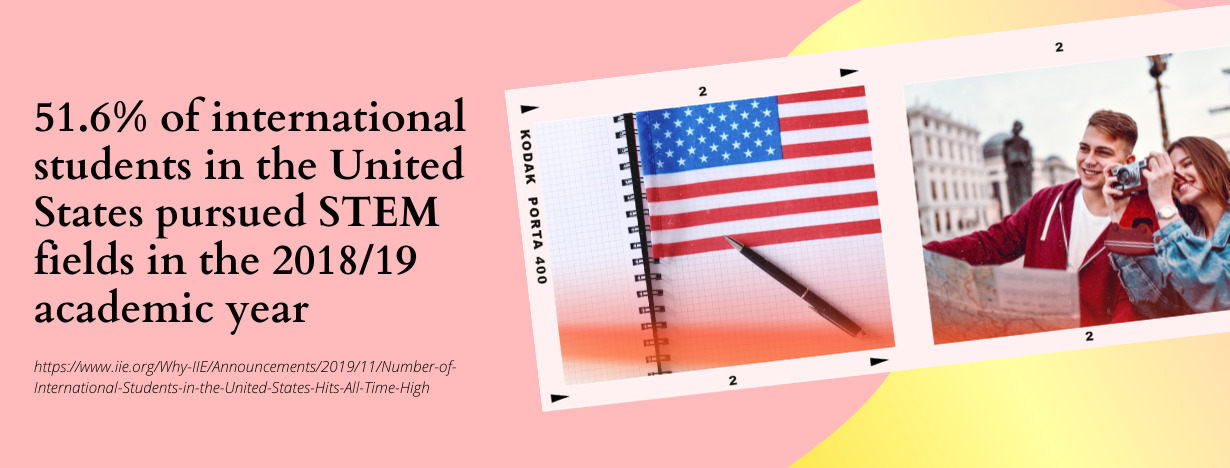
International students are denied US visas for a variety of reasons, which are outlined in this list. Your Embassy will explain to you why your application for a student visa has been rejected. If your application is denied, you will not be able to get your money back.
If your student visa application is rejected, you must repeat the process above and reapply for a visa. Moreover, embassies do not reevaluate visa applications. Most visas are not dismissed.
Additional Information:

